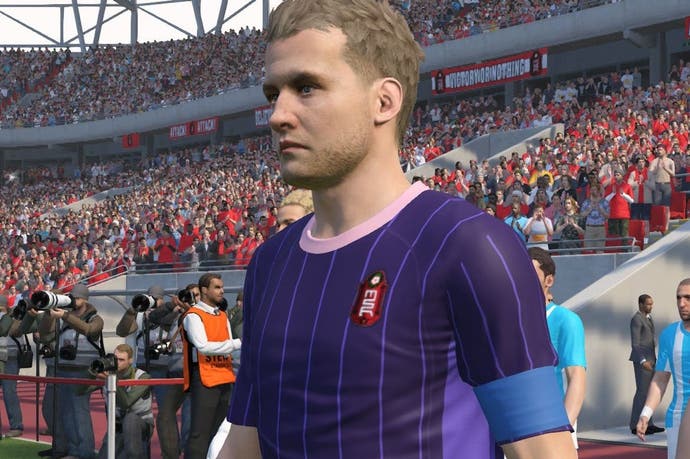Face-Off: PES 2015
Who wants to be a Mignolet?
With Konami's prized football sim openly declared as a full HD presentation on PS4, it's the Xbox One's meagre 720p delivery that raises eyebrows. Opting for the same Fox Engine set-up as Metal Gear Solid 5: Ground Zeroes, these resolutions amount to a mammoth difference in image quality for Pro Evolution Soccer 2015. But is this the extent of the differences for the series' current-gen debut - and how does the Sony platform's frame-rate hold up at this setting?
Kicking off with patch 1.01 installed on each, the initial reaction is perhaps the most obvious. With Xbox One running at 44.4 per cent of the PS4's overall pixel output, the presentation of pitch details is hugely impacted. From the patterning of grass shaders to the nylon weave across player boots, the impression is that Xbox One is working to a last-gen technical standard by rendering at 720p. Even setting the game to its default 'wide' camera option, the field and players are noticeably softened, and worst of all, panning sweeps across stadia supports and crowds produce a much nastier pixel crawl effect on Microsoft's platform.
Konami's post-processing AA does nothing to tackle this temporal aliasing effect, which even affects PS4 - where the issue is still apparent at 1080p, but far less pronounced. Generally, the on-pitch action is spared of the artefact but the Be-a-Pro style 'player' perspective causes a distracting flicker to crowds across the podiums in view. This year's Metal Gear Solid 5: Ground Zeroes flagged resolution as a minus point for Xbox One, but here it exacerbates an issue unique to a sports title, and it's one that desperately needs addressing.
A clear bullet-point is made of the Xbox One's resolution hit then, but what else is there to divide the two? To answer this, we've pieced together a comparison video, both sides running at 25 per cent speed to bring out the contrast as best as possible.
The Fox Engine saw a discreet debut last year on the Xbox 360 and PS3 versions of Pro Evolution 2014, but the technology's debut on the current-gen systems sees the series embrace similar key features to Ground Zeroes. There's an ambitious lighting model with multiple dynamic lights, materials-based rendering, plus photographic-style effects such as depth of field. Given its intended use as a vehicle for Kojima's Metal Gear projects, it's surprising to see the engine's adaptability here - neither PS4 or Xbox One misses out on its key features.
Aside from pixel count, both Sony and Microsoft hardware holds up to the exact same bar of quality - the game's shadow quality, player facial detail, and texture map resolution are a match. Even so, however minor, there are some differences on close inspection. Texture filtering quality is a divisive point, appearing in a more refined form on PS4, while the Xbox One applies a more obvious filtering cascade to pitch-side insignia. Grass shaders also show up with sharper highlights on PS4 at ground level, manifesting in a slightly simplified form on the Microsoft platform. However, just about every other element of the game's design is even.
Unfortunately, this is not always a selling point. Though players feature self-shadowing while walking through stadium entrances, the lighting itself is too heavy-handed on both consoles. Without any effective ambient occlusion, the pitch takes on a very clinical look, where goalposts, players, and even the crowds lack the necessary shading to simulate spatial depth. On that point, the 3D crowds lining the stadium stick out especially for another reason, with their use of a sub-30fps refresh standing at odds with the main action's full 60Hz.
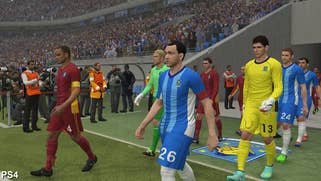

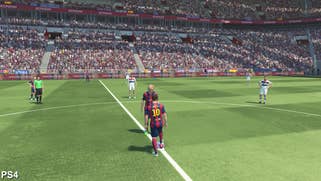
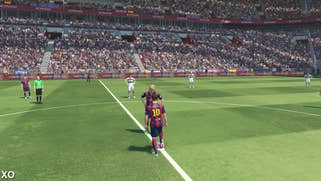
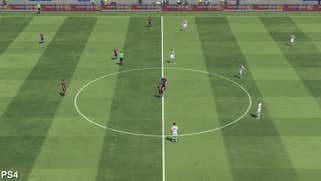
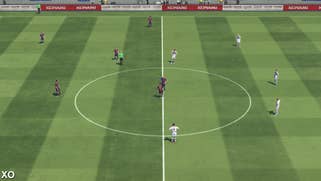
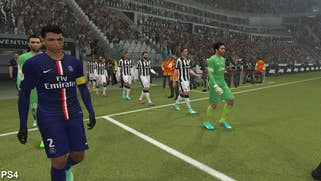
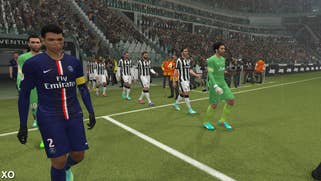


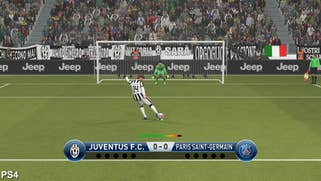
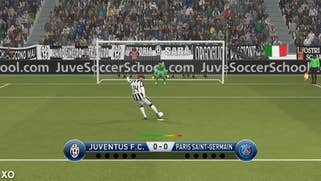
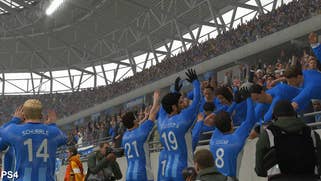

On to the frame-rate metrics, and we're immediately presented with strong 60fps performers on both PS4 and Xbox One. Simply put, the actual core gameplay runs at a perfect update without a single hiccup to mention; and, unlike FIFA, this applies to all set-pieces and gameplay camera modes. It's exactly as it should be, with the PS4's locked 1080p60 delivery every bit as consistent as in Metal Gear Solid 5: Ground Zeroes. Likewise for Xbox One, the resolution drop is a tough pill to swallow, but playback itself is at an unerring 60fps.
However, it's the experience surrounding the gameplay that is affected by frame-rate dips, and both consoles are impacted in different ways. For example, Xbox One suffers from more stuttering during cut-scenes, particularly just as a match pre-amble starts. Around team selection menus, we also catch background loading not present on PS4, which renders the controller inputs null for a second or two until it resolves. It's a minor frustration on Microsoft's platform, but once again, the on-pitch action is unaffected.
The PS4's unique issue is perhaps more glaring, but hardly a game-breaker. While automatic replays run at a perfect 60fps, entering the replay mode to manoeuvre the camera manually can cause dips on Sony's platform. For example, angling the viewpoint towards an oncoming player, with both teams in full view behind, makes it easy to record a sustained 40fps drop. Stress-testing the engine under normal circumstances is a challenge, but in this specific scenario the PS4 reveals an interesting bottleneck not shown on Microsoft's hardware.
Pro Evolution Soccer 2015: the Digital Foundry verdict
All of which leaves us with a fairly clear round-up. For Konami's first football sim of this new generation, the PS4 is unequivocally the version of choice based on its vast resolution advantage. Pro Evolution Soccer 2015 may not have the glamour of its contemporaries, but unlike its FIFA competition, it's able to uphold a perfect 60fps during all forms of gameplay; from corners to its Be a Pro style mode. In this sense, neither PS4 or Xbox One miss out on a pitch-perfect gameplay experience.
There are other, minor advantages in favour of the PS4 release, such as the improved texture filtering, but at its essence, the 1080p presentation is the real clincher against the 720p Xbox One's version. At the cost of 40fps dips during manual replays, this is still an unbeatable position for Sony's platform, where virtually every other significant graphical point is matched between the two.
The Fox Engine strikes again then; deftly trying its hand at both football sims and open-world action games all in one year. Despite Pro Evolution Soccer 2015's plain geometry and clinical lighting pointing towards a cross-gen design, the engine's debut on PS4 and Xbox One is at least a stable one - and one from which the series can now build.
